|
|
JOLLY-BOAT of PETER I
Pereslav-Zalessky
Russian
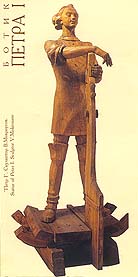
The Pleshcheyevo Lake near Pereslavl-Zalessky is
considered to be the birthplace of the Russian Navy. In 1688 young Tsar
Peter visited the Pleshcheyevo Lake for the first time. The lake enchanted
the Tsar and on his return to Moscow he told his mother Natalya Kirillovna
about his impressions and prayed to let him go to Pereslavl for building the
fleet and the court. In August 1688 Peter arrived in Pereslavl-Zalessky and
settled in the Nikitsky and later in the Goritsky Monastery. Peter himself
went deep into all details of work. But state affairs distracted Peter from
his favourite job. On November 29,1691, he arrived to Pereslavl-Zalessky
once again and developed a large-scale project. On May 1, 1692, Peter
completed rigging the large vessel and launched it together with other
boats. About a hundred big and small boats were built by summer 1692.
General Patrick Garden recruited the crews, mainly from local youths. August
1,1692, was marked with launching of all the boats of the fleet. The
Pleshcheyevo Lake was to be a research laboratory of sorts of the Russian
Navy. "Taking care of the remains of vessels, yachts and galleys is
incumbent on you; if you neglect your duty, your descendants and not you
alone will answer for your carelessness", said the edict issued in Pereslavl
on February 7, 1722 and signed by Peter I. That first in Russia document on
the preservation of monuments of the past was prompted by a complete
destruction of his beloved creation which the Tsar occasionally saw on his
way from Moscow to Vologda.
Pereslavl voivodes ardently rushed to execute the royal
order. All encircled brief measures completed by winter 1722. The terror of
voivodes died together with Tsar Peter I. Remains of the Pereslavl toy navy,
neglected by local authorities, burnt down in
1783. –≤ he Russian naval history was re-created in the early 19th century
when the Governor of Vladimir, poet and historian Ivan Mikhailovich
Dolgoruky, built a stone mansion for the Peter Museum on the place where the
fleet originated, on money donated and collected by people of the
Pereslavl Uyezd. The Museum was ceremonially inaugurated on August 1, 1803.
Nowadays there are rare exhibits of the Peter's toy fleet in the Museum..
The Museum can also boast rare pictures, engravings, portraits and sculpture
from the 18th century. A monument to Peter the Great was unveiled on August
17, 1852, in front of the Museum. On 1918 the "Jolly-Boat" Estate was
proclaimed a State Monument of History. Thc^ exposition under the title of
"The Pleshcheyevo Lake as the Cradle of the Russian Navy" opened on July
29,1984.

PETER-I
(Sculptor V.Mokrousov)

The "JOLLY-BOAT of PETER I" museum
1803
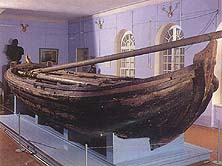
The "Fortune" Jolly-Boat
1692

The Triumphal Arch
Architect Zherebtsov, 1852
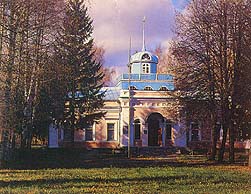
The White Palace
1852 - 1853
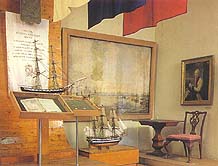
The Fragments of Exposition
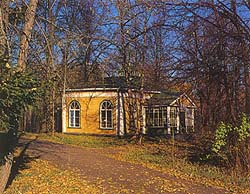
Rotunda
1852
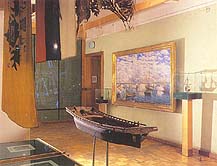
The Fragments of Exposition
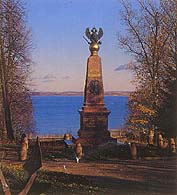
The Munument to Peter I
Sculptor A.S.Campiogni, 1852
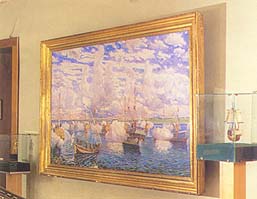
"Poteshny Fleet on the Pleshcheyevo Lake, August 1, 1692 –≥.
D.N.Kardovsky
–Ы–Є—В–µ—А–∞—В—Г—А–∞ –≤ "–†—Г—Б—Б–Ї–Њ–Љ –њ–µ—А–µ–њ–ї–µ—В–µ"
–Ч–∞–њ–µ—З–µ—В–ї–µ–љ–љ–∞—П –†–Њ—Б—Б–Є—П
–Э–∞—Г–Ї–∞ –Є –Ї—Г–ї—М—В—Г—А–∞ –≤ "–†—Г—Б—Б–Ї–Њ–Љ –њ–µ—А–µ–њ–ї–µ—В–µ"
–Ы–µ–љ—В–∞ –љ–Њ–≤–Њ—Б—В–µ–є —А—Г—Б—Б–Ї–Њ–є –Ї—Г–ї—М—В—Г—А—Л
–Ы–µ–љ—В–∞ –љ–Њ–≤–Њ—Б—В–µ–є –љ–∞—Г–Ї–Є —В–µ—Е–љ–Є–Ї–Є
–Ф–Є—Б–Ї—Г—Б—Б–Є—П
















